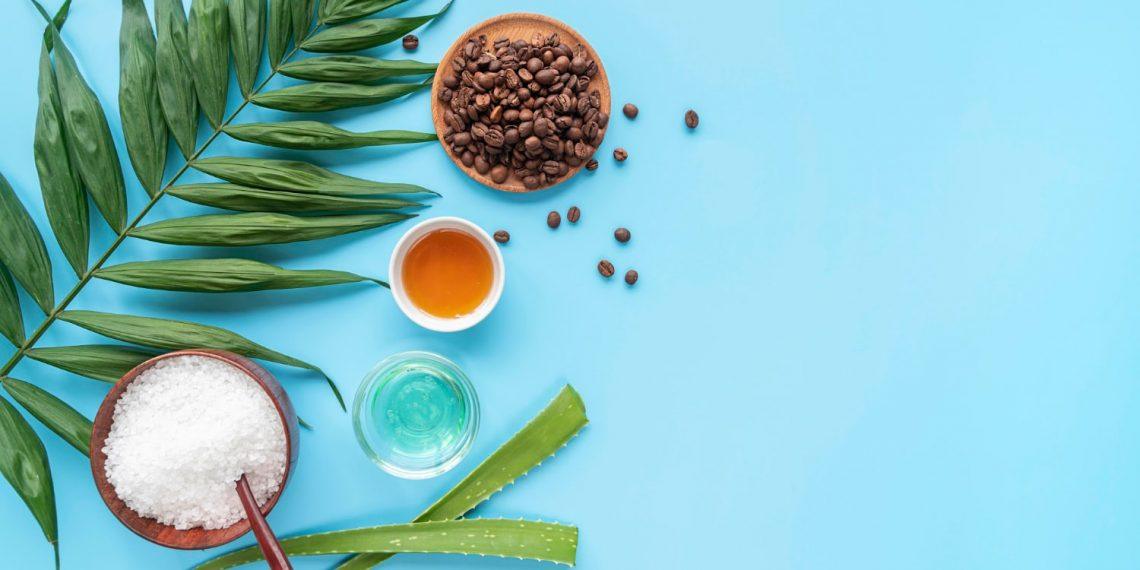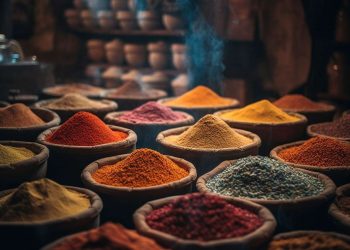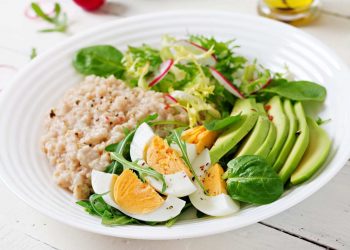Bones healing foods are the nutritional powerhouses that help rebuild strength after a break, a surgery, or the slow wear of age. These are the real, edible tools that feed collagen, supply the minerals bones need, and quiet inflammation so healing happens faster. You want to recover. Your body wants to be whole. The right choices at the table speed things up.
Contents
Top 7 Bones Healing Foods To Speed Recovery
Healing is practical. It’s not prayer or wishful thinking. It’s smart food, steady choices, and consistent habits. Below I walk you through seven foods that matter most when your bones are asking for help. Each one does something different: some build bone matrix, some reduce inflammation, some bring the calcium that mattered yesterday and the vitamin D that matters today.
1. Wild Salmon
Wild salmon is a hero for bone repair. It delivers vitamin D and omega-3s — both essential for bone density and for calming the inflammation that slows repair. Studies from major universities show that vitamin D helps the body absorb calcium, and omega-3s reduce inflammatory markers that can slow recovery.
Eat a palm-sized portion three times a week. Bake or grill with lemon and herbs. If you’re post-op or recovering from a fracture, a few servings a week of wild salmon puts vitamin D on your side and moves healing along.
How To Use Salmon
Keep it simple: roasted fillets, salads with flaked salmon, or a humble salmon and sweet potato bowl. Avoid heavy sauces that drown nutrients. The goal is easy meals that you’ll actually eat when you’re tired.
2. Greek Yogurt
Greek yogurt gives you bone-building protein and calcium in one bowl. It’s thick, satisfying, and practical. Protein feeds collagen production — the scaffolding bones need — while calcium supplies the mineral backbone.
Choose plain, unsweetened versions and add fruit and nuts for texture. If you can tolerate dairy, a daily serving of Greek yogurt is one of the easiest bones healing foods to add into your routine. For those who need dairy-free, look for fortified plant yogurts with equivalent calcium and vitamin D.
3. Dark Leafy Greens
Spinach, kale, collards — these are not just side dishes. They are concentrated providers of vitamin K, magnesium, and calcium. Vitamin K plays a quiet but crucial role: it helps activate the proteins that bind calcium into bone. Without it, calcium circulation doesn’t always end up where you want it.
Cook them lightly or blend them into smoothies. Add a squeeze of lemon to increase nutrient absorption. Make dark leafy greens a daily habit; they are base-level, dependable bones healing foods.
4. Bone Broth
Bone broth has become a staple for a reason. Slow-simmered bones release collagen, gelatin, and minerals into the broth — the very building blocks your body reuses to repair tissue. Clinical nutritionists often recommend broths during recovery because the nutrients are easy to absorb and comforting when your appetite is small.
Sip it warm, use it as a soup base, or cook grains in it for an extra lift. Homemade is best because you control how long it simmers and what goes into it, but good-quality store-bought versions will do in a pinch.
5. Nuts And Seeds
Almonds, chia, flax, and pumpkin seeds pack calcium, magnesium, phosphorus, and healthy fats that support bone repair. They are portable and dense. That matters when you’re juggling appointments and therapy sessions and still need to eat well.
A handful each day — sprinkled on yogurt or salads — adds essential micronutrients without fuss. Chia seeds also contribute a little protein and gelatin-like texture when soaked, helpful for digestive comfort and nutrient uptake.
6. Citrus Fruits And Berries
Vitamin C is non-negotiable for collagen synthesis. Oranges, strawberries, kiwi, and citrus provide that bright punch of vitamin C your body uses to stitch proteins together. Without it, collagen formation slows and healing drags.
Add berries to yogurt, squeeze citrus over greens, and snack on mandarins. These fruits also bring antioxidants that reduce oxidative stress — another roadblock to speedy repair. Treat them as essential members of the bones healing foods lineup, not optional extras.
7. Legumes
Beans, lentils, and chickpeas deliver magnesium, protein, and fiber. Magnesium helps convert vitamin D into its active form in your body. Protein from legumes supports the collagen matrix and overall tissue repair.
Use them in soups, stews, and salads. If you’re worried about bloating, start with small amounts and increase gradually. Legumes are slow-release energy and a steady source of nutrients your bones will thank you for.
How These Foods Work Together
No single food is a miracle. Healing is a team effort. You need calcium, but calcium without vitamin D and vitamin K can be wasted. Protein without vitamin C won’t build collagen efficiently. That’s why the phrase bones healing foods is plural — a menu of supportive choices, working together.
A simple daily plate might include a salmon portion, a bowl of leafy greens with citrus, a dollop of Greek yogurt, and a handful of nuts. Add a cup of bone broth or a lentil soup. That balance feeds bone mineralization, reduces inflammation, and supports the soft tissues around the injury.
Practical Meal Plan For Recovery
– Breakfast: Greek yogurt with berries, chia seeds, and a sprinkle of chopped almonds.
– Lunch: Kale salad with flaked salmon, orange segments, and pumpkin seeds.
– Snack: A mandarin and a small handful of mixed nuts.
– Dinner: Lentil stew made with bone broth, served over roasted sweet potatoes.
This is simple. It’s doable. It’s the kind of eating that makes a difference.
Supplements And When To Consider Them
Food first. But supplements can fill gaps. If you have low blood levels of vitamin D, a doctor will recommend a specific dose. Calcium supplements can help when dietary intake is low, but excessive supplementation without medical oversight can cause problems.
Talk to a registered dietitian or your physician. They’ll guide testing and dosing. Reliable resources like NIH and Harvard Medical School discuss vitamin D testing and supplementation strategies and are excellent places to learn more.
Lifestyle Moves That Amplify Food
Nutrition is vital — but so are movement and sleep. Weight-bearing activity signals to your bones to stay strong. Gentle strength work and walking help bone remodeling. Sleep gives hormones the time they need to repair. Smoking and excessive alcohol blunt the benefits of even the best bones healing foods. Treat lifestyle like a partner in the recovery plan.
Simple Habits To Start Today
– Aim for short, consistent walks.
– Prioritize 7–9 hours of sleep.
– Stop smoking and limit alcohol.
– Keep hydrated; water moves nutrients.
These small habits make your food choices work harder.
Signs You’re On The Right Track
Recovery doesn’t always shout. Sometimes it’s subtle: less pain, more range of motion, better sleep, a steadier mood. Improved appetite and energy are also good signs your body is using bones healing foods the way it should.
If healing stalls, speak up. Imaging, labs, and professional therapy can uncover issues. You deserve answers and a treatment plan that includes strong nutrition.
Bottom Line
Bold food choices speed real healing. Make bones healing foods the backbone of your recovery: vitamin-D rich salmon, calcium-and-protein Greek yogurt, leafy greens, bone broth, nuts and seeds, citrus and berries, and legumes. Pair these with movement, sleep, and medical guidance when needed. Your plate is one of the most effective tools you have — use it kindly and consistently, and your body will respond.
Rest a little. Eat well. Keep going.
References
References
– National Institutes of Health provides comprehensive information on vitamin D and bone health (http://www.nih.gov/).
– Harvard T.H. Chan School of Public Health discusses the role of nutrition and physical activity in bone health (http://www.hsph.harvard.edu/).
– Mayo Clinic offers guidance on dietary sources of calcium and vitamin D for recovery (http://www.mayoclinic.org/).
FAQ
Which bones healing foods are best right after a fracture?
Focus on protein and vitamin C for collagen, plus calcium and vitamin D for mineralization. Think bone broth, Greek yogurt, citrus, and wild salmon. Small, frequent meals help if your appetite is low.
Can I get enough vitamin D from food alone?
It’s possible but difficult. Fatty fish, fortified dairy, and fortified plant milks help, but many people need sun exposure or supplements guided by a doctor to reach optimal levels.
How long until I see improvement from dietary changes?
You can notice energy and appetite improvements within days. Bone rebuilding is slower; meaningful changes in bone density take months. Consistency matters more than perfection.
Are there foods to avoid during bone healing?
Limit excessive alcohol and reduce highly processed foods. Very high sodium and excessive caffeine can interfere with calcium balance. Focus on nourishing, minimally processed options instead.
Get Your FREE Natural Health Guide!
Subscribe now and receive our exclusive ebook packed with natural health tips, practical wellness advice, and easy lifestyle changes — delivered straight to your inbox.














